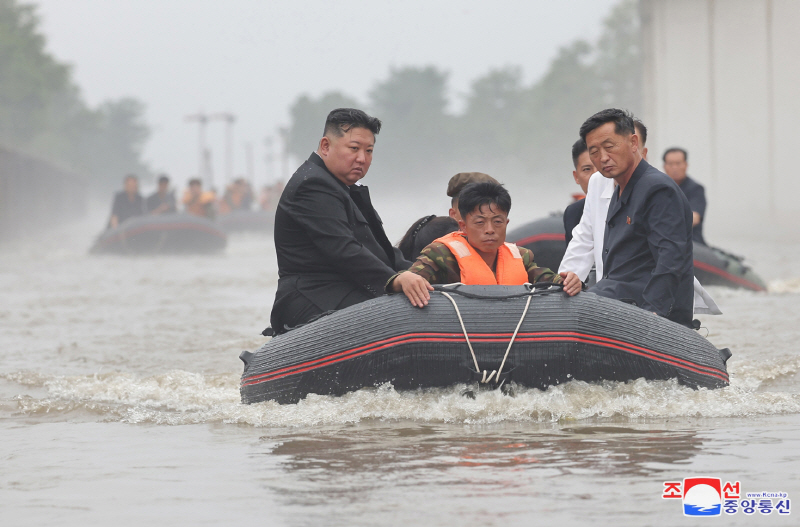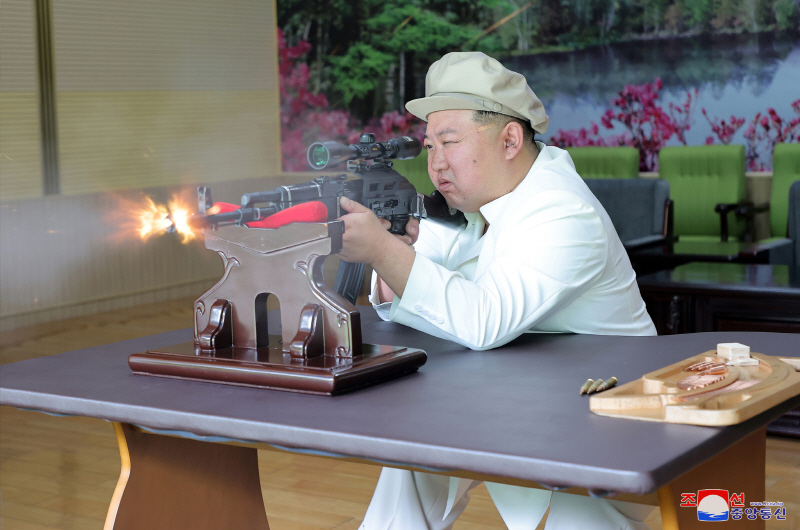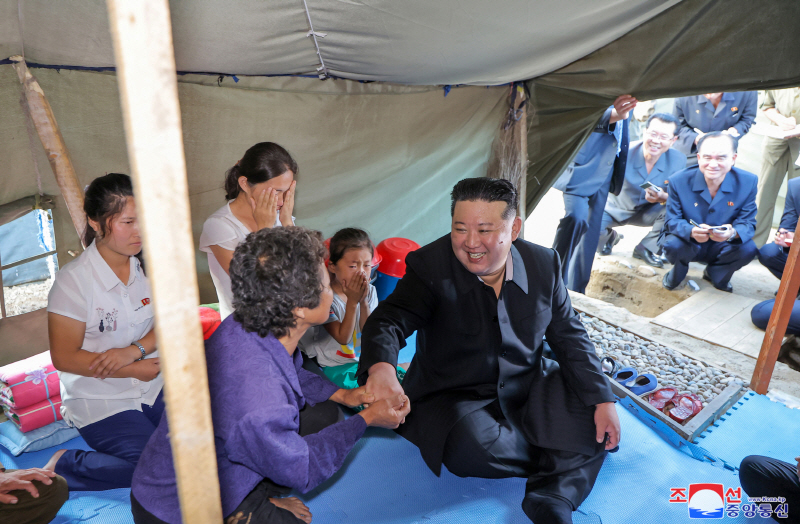North Korean leader Kim Jong-un, who has been actively promoting his image as a “leader who cares for the people” by visiting flood-affected areas, has notably avoided visiting Jagang Province, which suffered the most damage. This has led to speculation that there may be something he wishes to conceal.
During a briefing to the National Assembly’s Intelligence Committee on August 26, South Korea’s National Intelligence Service (NIS) reported that the northern region of North Korea, particularly Jagang Province, experienced significant flood damage.
The NIS noted that despite the heavy damage, there has been no mention or external exposure of the situation in Jagang Province, calling it “quite interesting and unusual.”

Experts suggest that this may be due to the province’s status as a hub for North Korea’s military-industrial complex. Jagang Province is known as the “mecca” of North Korean arms production, with more than half of the country’s weapons research and production facilities located there. For Kim Jong-un, this makes the area the heart of the military industry that should not be exposed to the outside world.
Key military facilities in Jagang Province are concentrated around cities like Kanggye, Huichon, and Manpo. Notable military factories include the Kanggye Tractor Factory (Factory No. 26), which produces missiles and various types of shells; the Youth Electric Complex (Factory No. 38), which specializes in missile control devices; the Songgan Steel Factory (Factory No. 81), which manufactures missile launchers; and the Kanggye Precision Machinery Complex, known for producing rifles, machine guns, and ammunition.
Jagang Province has long been a strategic location for North Korea’s military industry due to its mountainous terrain, which is rich in underground resources necessary for weapons production. Additionally, its proximity to the Chinese border makes it easier to procure materials needed for weapons development.

Since last year, North Korea has been exporting large quantities of shells, ammunition, and missiles to Russia, leading to the full operation of military factories in Jagang Province. The lack of media coverage of flood damage in the area may be due to concerns about exposing these secret facilities, as the damage could directly impact the quantity and quality of weapons being supplied to Russia.
O Kyung-seop, a researcher at the Korea Institute for National Unification, said, “Jagang Province houses key military facilities related to North Korea’s nuclear and missile programs, as well as conventional weapons. Given the record rainfall, it’s highly likely that underground military facilities have been affected by flooding.”
In fact, last August, it was reported by Daily NK, a North Korean-focused news outlet, that the southern tunnel of Military Factory No. 11 in Songgan County, Jagang Province, was heavily damaged by flooding.
Some analysts also point to the region’s poor transportation infrastructure compared to Pyongan Province, where Kim Jong-un has made multiple visits. While Pyongan Province, the center of North Korea’s foreign trade with China, has relatively well-developed rail and road networks, Jagang Province’s transportation system is underdeveloped, particularly for freight transport.

This could pose logistical challenges for major events, which often involve Kim Jong-un’s private train, known as the “moving office.” The logistics of organizing such a “first-class event” may have led to Jagang Province being excluded from his inspection tour.
In a recent report on August 18, North Korea’s Rodong Sinmun mentioned the flood recovery efforts in Jagang and Yanggang Provinces, revealing for the first time that the heavy rains had disrupted railway operations in Jagang Province.
The newspaper stated, “With the opening of over 240 kilometers of roads and the restoration of the Dongshin-Kanggye railway, prospects for expanding flood recovery efforts in Jagang Province have improved.”
BY YEONGGYO CHUNG, YOUNGNAM KIM [chung.yeonggyo@joongang.co.kr]




